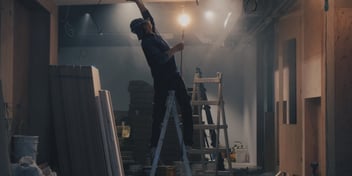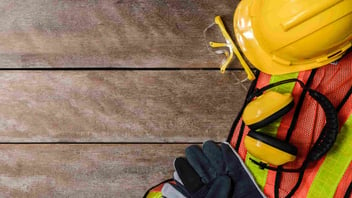It’s important to keep employees safe on the job—we all know that, right? You have the standard guidelines to follow from OSHA and other governing authorities, and maybe you know of some tried and true best practices that work well for you. Mattress Advisor, shares some way you can prepare your bedroom specifically for an emergency but what can you do for the rest of your home?
Since the modern surge in safety efforts began in the 1970s, we’ve come a long way in shaping regulations and guidelines that ensure all-around safer workplaces for everyone. With safer workplaces come fewer injuries and fatalities and fewer losses in the company in general. So it seems as though we live in a safer world and we really don’t have much to worry about anymore… right?
But how are your employees staying safe off the clock, out of the workplace? What’s keeping them safe during their commute and in their home? Sure, there may be laws governing very large scale and extremely dangerous items and actions, but what about all of the everyday hazards that we encounter, just like at work?
As a safety leader, you can educate your employees and teach them how to prepare themselves best for everyday situations—help them to create a home safety checklist that suits their life.

What is a home safety checklist?
It’s as simple as that: a checklist that lists potential hazards and key safety precautions. Every home is unique, so every list will look a little bit different.
It’s important to take into consideration household objects and appliances that could cause accidents and injuries, such as:
-
Kitchen appliances, such as a stove, oven, toaster, and garbage disposal
-
Silverware and sharp utensils
-
Tools and equipment
-
Chemicals
-
Medicines
-
Small bathroom appliances such as curling irons and hair dryers
-
Electrical outlets and extension cords
-
Swimming pools
However, these obvious hazards are not the only potential accidents in the home. Sometimes the most harmless of daily objects can turn dangerous in the blink of an eye. Other things to keep in mind:
-
Young children or elderly adults with poor motor skills
-
Pets that can get into things or knock things over
-
Any items that cause clutter or tripping hazards
-
Disrepair in the home, such as loose hand railings or floorboards
-
Wet surfaces, especially around slippery surfaces like bathrooms
How does this help employee safety?
Creating a home safety checklist helps to create awareness about the potential hazards in the area, which can be used to reduce the chances of injury and create a safer environment. For example, taking note of a damaged step on the staircase means that you can add it to a short list of minor repairs to accomplish.
Another helpful tactic is to observe for a few days what kinds of things seem to cause minor incidents or close calls. Is there a rug that everyone seems to trip over? Is there a vase that keeps getting knocked over? How about a nail somewhere that snags on clothing and other passing objects? By eliminating known hazards, you can increase home safety and free up your attention and energy for other larger problems.
When is a home safety checklist useful?
Lists like this can be useful any time. The first time it’s created or used, it’s a great resource for compiling a list of home safety hazards that can be fixed in the near future. It’s also a helpful resource for new parents or pet owners, since the most dangerous situations usually arise when a small, energetic being has free reign of the house. Also use it when going on vacation, inviting guests over for a party, or any occasion when safety may be a concern.
It may seem like a strange exercise initially, but safety is a full-time job for pretty much everyone. To avoid injuries, fatalities, and other disasters, gathering your thoughts in a concrete, organized fashion can go a long way. Employees are more than an eight-hour shift five days a week—they’re people with lives and families, and they can get hurt on the job or at home all the same.






Leave a Comment